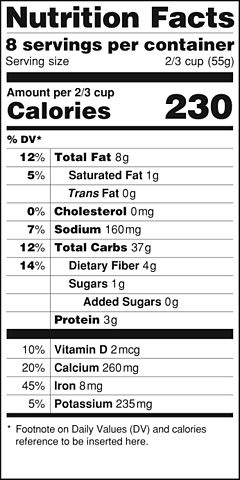By: Julia Rentsch, GECO Columnist
The advertising industry is built on exaggeration. No Big Mac in history has ever looked like those perfect ad pictures, and everybody knows that giant hamsters would never drive those jazzy little Kias (giant hamsters love Jeeps, duh). Advertising gimmicks can get you when you least expect them—sure, I’d expect some portentous claims from TV ad campaigns or on billboards, but how about on food packaging?
Food manufacturers work just as hard as any other brand to sell you stuff, and that includes putting buzzwords on their packaging that can make you think what you’re buying is healthier, greener, or more ethical than it actually is. For example, words such as “green,” “clean,” “all-natural,” “chemical-free,” “nontoxic,” and “environmentally preferable” on packaging are completely meaningless because they are undefined and unregulated terms. Brands that use terms like these are simply trying to convince people who are sustainably-minded to buy their product. This means that a brand can try to sway customers to buy its product by making insinuations about the quality of their product without actually needing its product to conform to them, since there are no official Federal Drug Administration definitions for these words. For example, a food that is advertised as “all-natural” might sound like it’s minimally processed and automatically healthy, but it can still contain a ton of added sugar, and contrary to many people’s assumptions, it does not mean that the product is organic. Except when it is applied to meat and poultry products, the term “natural” is legally meaningless. “From a food science perspective, it is difficult to define a food product that is ‘natural’ because the food has probably been processed and is no longer the product of the earth,” says the FDA website.
The best terms to look for are both defined and regulated. This requires a third party to independently verify that a product is meeting the standards that it claims. You are probably familiar with some examples of defined and regulated terms, such as Dolphin Safe tuna, Certified Organic food, Energy Star appliances, and Sustainable Forestry Certified wood and paper products. There is a lot to remember when it comes to attempting to shop knowledgeably. Sticking to these best-option terms that are defined and regulated will make the experience easiest. This is especially true because our constantly evolving and advancing food system produces new labeling terms all the time, the transitioning of which can cause certain terms to become defined, yet unregulated. Examples of such terms are “GMO free” produce, “natural” meat and poultry, “ozone safe” sprays, “recycled” paper products, and “low emissions” vehicles. These claims have an official FDA definition, but are not verified by a third party and are allowed on the assumption that the companies making them are being truthful.
Information for this article was largely collected from a 2006 book called It’s Easy Being Green by Crissy Trask. I’d recommend it for any casual environmentalist looking to learn a bit more about how to change your at-home habits in small ways to make your life more energy efficient. Remember, if every American improved their life in such small ways, we’d be a lot closer to achieving our resource conservation and climate regulation goals.

